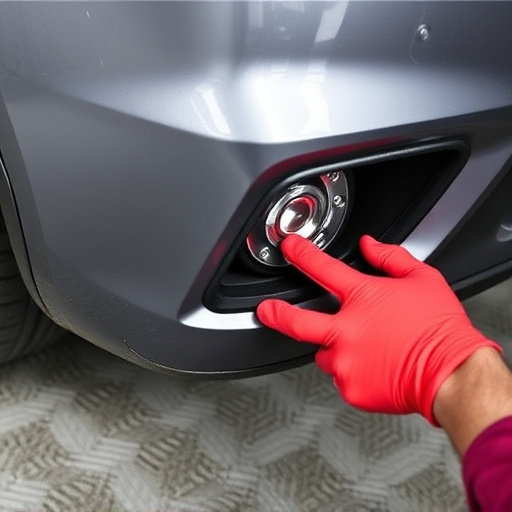Spot Welding Equipment: Ensuring Factory-Grade Panel Attachment Perfection

Spot welding equipment is a versatile and essential tool for manufacturing and automotive industries…….
In the realm of industrial manufacturing, spot welding equipment plays a pivotal role in joining metal components with precision and efficiency. This article aims to provide an extensive exploration of spot welding technology, its applications, global impact, and future prospects. By delving into various aspects, from historical context to technological advancements, readers will gain a comprehensive understanding of this essential manufacturing tool.
Spot welding, as the name suggests, is a specialized technique for locally melting metal at specific points to create a strong bond between two or more pieces. The equipment employed in this process consists of several critical components designed to deliver focused heat energy:
Weld Gun: The core component, responsible for generating and directing the heat required for welding. It typically houses an electric current or laser source to melt the metal.
Power Supply: Provides the necessary electrical power to the weld gun, enabling it to generate the intense heat needed for spot welding. This can be in the form of direct current (DC) or alternating current (AC).
Control System: A sophisticated mechanism that regulates the power output, timing, and other parameters to ensure precise welding. It allows operators to set specific settings for different metal types and joint configurations.
Workholding Mechanisms: Devices that secure the workpieces in place during the welding process, ensuring stability and accuracy. These can include clamping systems or vacuum holders.
Cooling Systems: To prevent overheating and distortion of the welded components, cooling mechanisms are employed. Water or air-cooling systems are commonly used to quickly stabilize the weld.
Historically, spot welding equipment evolved from the need for efficient and consistent metal joining in the automotive industry during the mid-20th century. Since its inception, it has undergone significant advancements, becoming a versatile tool with applications across various sectors.
The influence of spot welding equipment is not confined to any single region; it is a global phenomenon that has revolutionized manufacturing processes worldwide. Key trends shaping this industry include:
| Region | Impact and Observations |
|---|---|
| North America | The automotive sector in the US and Canada heavily relies on spot welding, contributing significantly to the market’s growth. Advanced robotics and automation are being integrated with spot welding equipment to enhance productivity. |
| Europe | Known for its stringent environmental standards, European manufacturers use spot welding for lightweighting vehicles, reducing carbon emissions. The region is witnessing a rise in laser-based spot welding technology adoption. |
| Asia-Pacific | With the world’s largest automotive manufacturing base, countries like China and Japan drive demand for versatile and affordable spot welding equipment. High-speed automated welding systems are gaining popularity. |
| Middle East & Africa | The construction and automotive industries in these regions are expanding, leading to increased demand for spot welding equipment for various applications. |
| South America | Brazil’s growing automotive sector and emerging manufacturing hubs are creating opportunities for spot welding technology providers. |
These trends highlight the universal need for efficient metal joining techniques, fostering a competitive global market for spot welding equipment manufacturers.
The spot welding equipment market is characterized by dynamic interactions between supply and demand, influenced by several economic factors:
Automotive Industry: The primary driver of this market, the automotive sector’s need for efficient, cost-effective metal joining has propelled spot welding equipment sales. As vehicle designs become more complex, requiring lightweight materials, the demand for advanced welding technologies is on the rise.
Construction and Infrastructure: With infrastructure development projects gaining momentum worldwide, there is a growing demand for spot welding equipment to fabricate steel structures, bridges, and other construction elements.
Aerospace and Defense: These industries require precise metal joining for aircraft and spacecraft components, creating a niche market for specialized spot welding solutions.
Market Concentration: The top players in the spot welding equipment market hold significant market share due to their innovative products and global reach. However, this also encourages smaller, niche manufacturers to develop unique offerings to capture specific customer needs.
Investment Patterns: Significant investments in research and development (R&D) drive technological advancements, resulting in more efficient and versatile welding systems. Private equity firms often back these ventures, recognizing the potential for high returns in a rapidly growing market.
The spot welding equipment landscape is characterized by continuous innovation, with manufacturers constantly pushing the boundaries of what is possible. Here are some notable technological advancements:
Laser Spot Welding: This technology offers unparalleled precision and control, enabling high-speed welding with minimal heat input. Lasers can be precisely focused on specific points, reducing heat affected zones (HAZ) and improving overall part quality.
Robotic Integration: The integration of industrial robots with spot welding equipment has revolutionized manufacturing. Robots can execute complex welding sequences with exceptional accuracy, making them ideal for high-volume production environments.
Advanced Control Systems: Modern control systems employ AI and machine learning algorithms to optimize welding parameters in real-time based on material properties and joint geometry. This ensures consistent quality and reduces waste.
Wireless Communication: The implementation of wireless communication protocols allows for remote monitoring and control of welding processes, enabling operators to manage multiple machines from a central location.
Material Processing Improvements: Researchers are developing new materials with enhanced weldability, reducing the need for pre-treatment and improving overall process efficiency.
Governments worldwide recognize the importance of spot welding equipment in various industries and have implemented policies to ensure safe and sustainable practices:
Occupational Safety: Regulations focus on protecting workers from potential hazards associated with high-energy welding processes. This includes requirements for personal protective equipment (PPE), ventilation systems, and training programs to minimize workplace risks.
Environmental Standards: As the manufacturing sector contributes significantly to global emissions, governments enforce regulations to reduce the environmental impact of spot welding operations. These include guidelines for waste management, energy efficiency, and emissions control.
Product Safety: In industries like automotive and construction, products must adhere to specific standards, ensuring that welded components are safe and reliable. This often involves rigorous testing and certification processes.
Export Controls: Due to the dual-use nature of some welding equipment and technology, international trade regulations govern their export, ensuring they are not utilized for weapons development or other prohibited activities.
Despite its numerous advantages, spot welding equipment faces several challenges and criticisms:
Initial Cost: Advanced spot welding systems can be expensive, making them a significant investment for manufacturers, especially small-scale operations. However, the long-term operational cost savings often outweigh the initial expenses.
Skill Requirements: Operating complex welding equipment requires skilled technicians who understand material properties and welding processes. Training programs are essential to address this skill gap.
Waste Generation: Traditional spot welding processes can produce significant amounts of scrap material, particularly during initial setup or when dealing with new materials. Manufacturers are increasingly adopting lean manufacturing principles to minimize waste.
Environmental Concerns: While efforts have been made to reduce emissions and waste, some concerns remain regarding the environmental impact of certain welding technologies, especially in unregulated settings.
To overcome these challenges, industry stakeholders can collaborate on research initiatives, develop training programs, and promote sustainable practices within manufacturing communities.
Tesla, the iconic electric vehicle (EV) manufacturer, has utilized spot welding equipment to revolutionize its production processes. By employing advanced laser spot welding technology, Tesla has achieved significant lightweighting in its vehicles, reducing overall energy consumption and extending battery range. This precision welding approach also enables faster assembly times, contributing to their rapid production cycles.
In the heart of major metropolises, high-rise building construction relies on spot welding equipment for fabricating complex steel structures. Case studies in cities like Dubai and Shanghai showcase the efficient use of automated spot welding systems to create robust and lightweight components, ensuring faster construction times and higher structural integrity.
Boeing, a global aerospace leader, has embraced spot welding technology for its advanced aircraft designs. By employing specialized spot welding equipment with robotic arms, Boeing ensures precise and consistent welds in critical aircraft components, enhancing safety and performance. This approach also reduces manufacturing time and costs.
The future of spot welding equipment holds immense potential, driven by emerging technologies and evolving industry needs:
Industry 4.0 Integration: The fourth industrial revolution emphasizes smart factories and interconnected systems. Spot welding equipment will play a pivotal role in this transformation, with advanced control systems, AI integration, and the Internet of Things (IoT) enabling predictive maintenance and data-driven decision-making.
Sustainable Manufacturing: As environmental concerns grow, spot welding manufacturers are focusing on eco-friendly technologies and processes. This includes developing energy-efficient equipment, minimizing material waste, and exploring renewable energy sources for power supply.
Customized Production: The rise of mass customization in manufacturing requires flexible and adaptable spot welding systems. Future equipment will need to accommodate diverse product designs and materials with ease.
Global Market Expansion: With growing demand from emerging markets, especially in Asia and South America, the spot welding equipment market is poised for significant expansion. Manufacturers will need to cater to local needs and regulations while maintaining global standards.
Spot welding equipment has emerged as a cornerstone of modern manufacturing, enabling precise metal joining across various industries. Its global impact, technological advancements, and ability to address complex challenges make it an indispensable tool for today’s manufacturers. As we look ahead, the future of spot welding promises enhanced efficiency, sustainability, and adaptability, shaping the way products are designed and assembled worldwide.
Q: What is the primary advantage of spot welding over other joining methods?
A: Spot welding provides precise, localized heating, allowing for minimal heat input and reduced material distortion. This results in stronger bonds and less waste compared to other joining techniques.
Q: How does spot welding contribute to sustainable manufacturing?
A: By minimizing material waste, reducing energy consumption, and enabling the use of lightweight materials, spot welding equipment plays a significant role in sustainable manufacturing practices, helping industries meet environmental goals.
Q: Can spot welding be used for joining plastics?
A: While traditional spot welding is primarily for metals, advanced technologies like laser welding can be adapted to join certain types of plastics with high precision and quality.
Q: What are some key considerations when selecting spot welding equipment?
A: Selection should consider the specific application, material types, production volume, budget, and future expansion plans. Factors like power source, control system capabilities, and ease of integration with existing infrastructure are crucial.
Q: How does robotic integration benefit spot welding processes?
A: Robots offer consistent precision, high-speed welding, and the ability to handle complex sequences, increasing productivity and reducing labor costs while ensuring part quality.

Spot welding equipment is a versatile and essential tool for manufacturing and automotive industries…….

Spot welding equipment is vital in Mercedes-Benz collision repair, ensuring precise reconstruction a…….

Spot welding equipment is a crucial automotive tool for precise metal joining, enhancing vehicle str…….

Spot welding equipment is revolutionizing collision repair by offering precision, speed, and versati…….

Certified collision centers require modern spot welding equipment to achieve high-quality, efficient…….

Spot welding equipment is essential in automotive manufacturing and collision repair, offering preci…….

Spot welding equipment is vital for auto body professionals, enabling precise control over welds to…….

Spot welding equipment is a versatile tool for precise and efficient metal joining in auto repair, f…….

Spot welding equipment is crucial for modern collision repair services, offering precision, efficien…….

Spot welding equipment is a critical tool for automotive restoration, offering precision and efficie…….